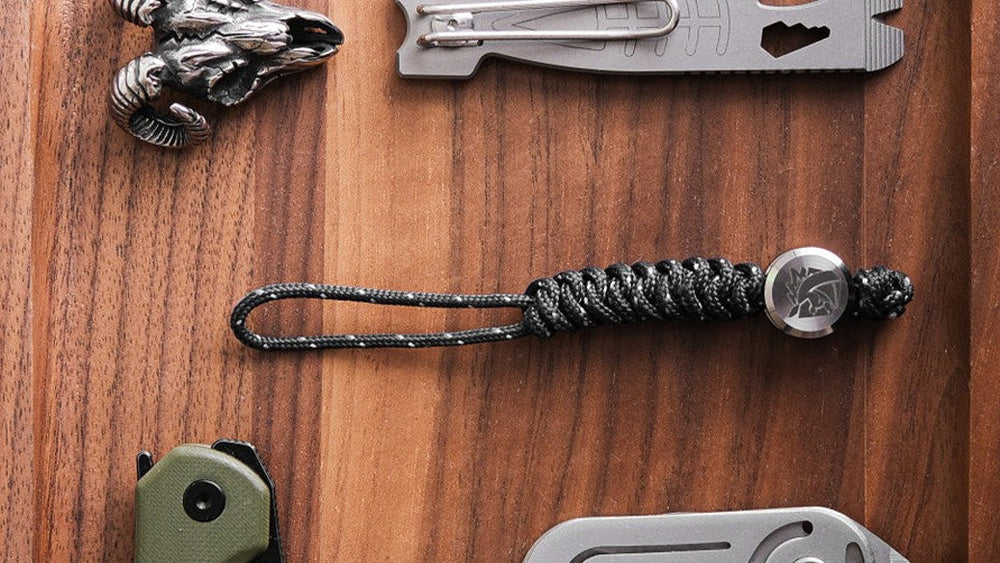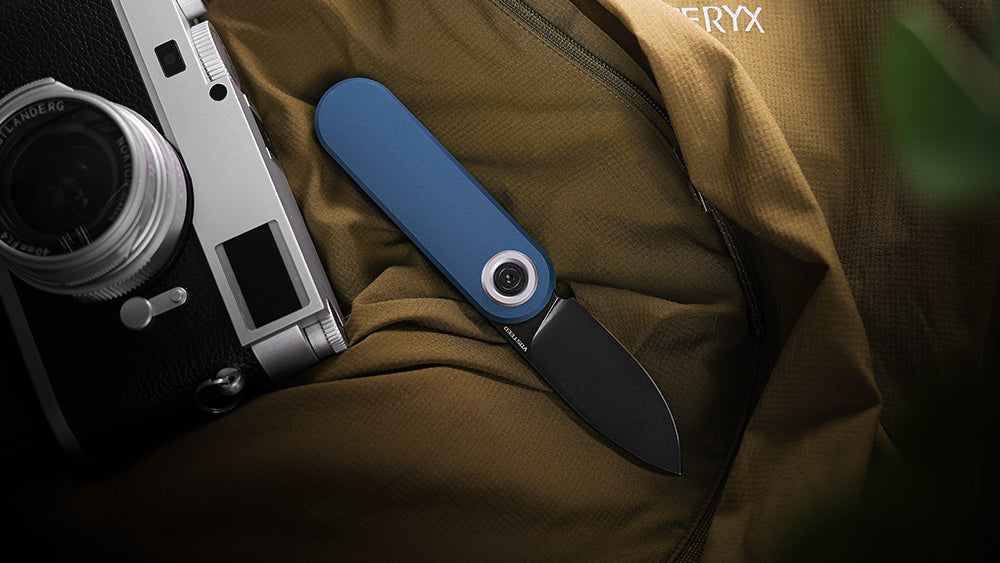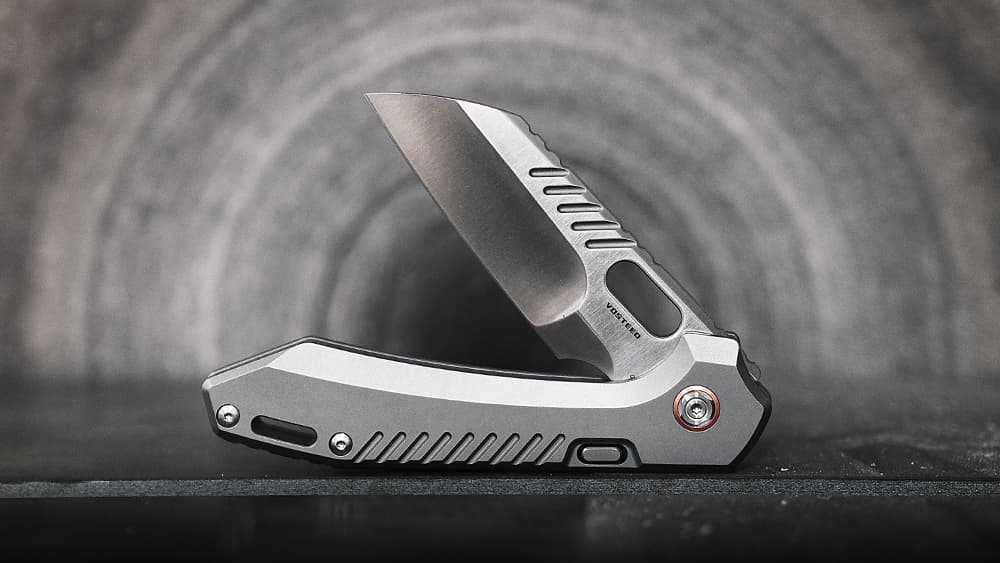Everyday Carry, or EDC, is about being prepared. It's not about collecting gadgets. It's about carrying a few useful items to handle daily tasks and unexpected problems. A good EDC kit is personal. It matches your life and gets you ready for what you might face. This BLOG today gives you a simple, step-by-step way to build a useful kit for city life. It gives you the right tools and a ready way of thinking.
Step 1: Assess Your Real Needs - Blueprinting Your Personal EDC
First, you need to think about your own life before you buy any gear. A kit made just for you is a good kit. Looking at your daily life is the first step.
A really useful EDC kit is for a specific person and their life. It is not a generic list you find online. You start by looking at your own life. You need to think about your daily habits, where you live and work, and the problems you often have. This helps you find tools that are actually useful. The act of paying attention is the first step to being prepared. You start to notice things more, like a dark path on your way home or how often you need a tool to open a box at work. You start thinking about problems, not just gear. This helps you become more aware of what's around you.

Ask yourself some direct questions. What is your daily travel like? Do you drive or take a bus or train? Your work setting is also important. An office worker needs different things than a person who works outside. Think about what you do after work, like going to the gym or seeing friends. These routines show you tasks you do often. Maybe you need to sign papers a lot, or your phone battery often runs out.
Next, look at your environment. Cities have their own special problems. You might be in crowded places, rely on public services, or need to not be noticed. A power outage in a city is different from one in the country. Think about problems that happen often but are small, like a loose screw on your glasses. Also think about problems that do not happen often but are big, like a bad storm. Your kit should have answers for both. Finally, learn the difference between a real need and something you just want. The goal is functionality, not having too many things. A tool earns its place in your kit because it is useful, not because it looks cool. Checking your kit every month helps you remove things you never use.
Step 2: Choose Your Carry Method - Defining Capacity & Accessibility
Once you know what you might need, you must decide how to carry it. The way you carry your gear is as important as the gear itself. It affects your comfort, how easily you can get your tools, and how much you are noticed.
How you carry your gear is a strategic choice, not just a simple one. In a city, being able to blend in is a valuable skill. A person with bulging pockets or a military-style backpack stands out. This can draw unwanted attention from criminals or police. The "grey man" concept is about moving through a crowd without being memorable. A discreet way of carrying your things is a form of social camouflage. It improves your personal security. So, your choice of how to carry your tools is a fundamental part of your city preparedness plan.
There are three main methods for an urban carry system.
Pocket carry is the most minimalist approach. Its advantage is fast access to your tools. The disadvantages are limited capacity and potential discomfort. Overloaded pockets look messy, feel heavy, and can reveal the shape of your items. A good practice is to assign specific items to specific pockets. This builds muscle memory so you can grab them without thinking.
Bag carry, using a backpack, sling bag, or messenger bag, is for people who need more capacity. A bag can hold larger items like a laptop, a water bottle, or a more extensive first-aid kit. The downside is slower access to your tools. You have to stop and open the bag to retrieve an item. Look for bags with good internal organization and dedicated quick-access pockets for your most-used gear.
Pouch or organizer carry offers a hybrid solution. A small pouch holds your core tools together. You can move the pouch from your jacket pocket to your work bag easily. This system keeps gear organized, prevents pocket clutter, and protects items from scratches. It creates a modular, grab-and-go kit. The only trade-off is an extra step to access a tool, since you must first open the pouch.

Step 3: Curate Your Gear - The Art of Quality, Function, and Design
With a plan and carry method in mind, you can now select your tools. Focus on items that solve multiple problems, are built to last, and fit seamlessly into your daily life.
The Core Trio: Phone, Wallet, Keys
Almost everyone already carries these three items. The EDC approach is about optimizing them. Switch to a slim, minimalist wallet to reduce bulk and improve comfort. A key organizer can silence the jingle of keys, create a slimmer profile, and sometimes add extra functions like a small bottle opener. Your phone is your most powerful modern tool, so its protection and power supply are top priorities.
The Indispensable Cutting Tool: Your First EDC Knife
A knife is a fundamental utility tool. Its primary role in an urban edc knife setup is for daily tasks. These tasks include opening boxes, cutting cord, preparing food, and handling countless other chores. A good pocket knife is versatile and reliable.
When selecting an edc knife, several factors are critical. First is size and legality. A blade length between 2.5 and 3.5 inches is practical for most tasks. More importantly, you must research and know the specific knife laws in your city and state. Laws can regulate blade length, locking mechanisms, and opening styles. Ignorance of the law is not a valid defense.
Blade steel is the heart of the knife. Modern stainless steels offer a great balance of edge retention, toughness, and corrosion resistance. They are easy to maintain, which is perfect for a first-time owner. The opening and locking mechanisms determine the knife's safety and ease of use. Manual openers like thumb studs or flippers are reliable. A secure lock is non-negotiable. A folding knife with a button lock offers satisfying and safe one-handed operation. For example, the Vosteed Corgi V has a strong Vanchor button lock, a useful 2.36-inch drop-point blade, and a comfortable aluminum handle. This makes it great for many daily cutting jobs. For a bigger but still easy-to-carry knife, think about the Vosteed Parallel. It has a 2.9-inch flat-ground reverse tanto blade made of 154CM steel that is great for slicing. Its cross-bar lock is known to be very strong and works for both left and right-handed people. The whole knife is in a very thin titanium handle.

Illumination on Demand: The Modern Flashlight
A dedicated flashlight is always better than your phone's light. It is brighter, more durable, and has a longer runtime. Crucially, it saves your phone's battery for its primary purpose: communication. A good light is useful for everything from finding items dropped under a car seat to navigating a dark stairwell during a power outage.
Look for a compact flashlight that is small enough for a keychain but powerful enough for real tasks. Brightness around 400-600 lumens is sufficient for most urban situations. A beam that balances a focused spot with wide flood is most versatile. A modern light should have a rechargeable battery, with USB-C charging for convenience. A simple user interface with low, medium, and high modes is best for beginners. The Vosteed Pineapple flashlight is a great example of modern urban edc essentials. It has a solid brass body with a special grip pattern. It can use a common AA battery or a rechargeable 14500 battery for up to 470 lumens of light.
Beyond the Blade: Specialized Utility Tools
Some tasks can damage a knife blade. Using your knife tip as a pry bar or screwdriver is a common mistake that can lead to a broken tool. Specialized items handle these jobs better and preserve your knife's integrity. The act of choosing the correct tool for a job reinforces good habits. It builds a mindset of resourceful problem-solving over brute force.
A small titanium pry bar, such as the Vosteed Shark Bomb, is an incredibly useful addition. It can scrape, pry, and lift without risking your knife. This particular tool is designed to be keychain-friendly and is made from Grade 5 titanium. It also includes a bottle opener and multiple hex wrench sizes, adding immense utility without taking up pocket space. For people who need more capability, a small, pliers-based multitool is another excellent option.

Staying Prepared: First-Aid and Power
Minor injuries are a common part of life. A small first-aid kit, or "ouch pouch," can handle most of them. Include adhesive bandages, antiseptic wipes, and a few common pain relievers. For your phone, a slim portable charger or power bank is a modern necessity. It keeps your most critical communication and navigation tool operational.
Step 4: Budget & Value - Investing in Tools for Daily Use
Building a kit does not need to be expensive. The goal is to acquire reliable tools that offer the best performance for their cost, focusing on long-term value over initial price.
The idea that EDC is an expensive hobby is a myth. You can build a highly capable kit on a reasonable budget. The focus should always be on value, which is the intersection of quality, durability, and price. It is better to have a few reliable tools than a collection of cheap gadgets that could fail in a critical moment.
You can start with the items you already own: your phone, wallet, and keys. Your first purchases should address your most immediate needs. Build your kit incrementally. Start with a quality pocket knife and a good flashlight. Add other tools later as your budget and knowledge of your needs grow. Many reputable companies offer excellent, affordable products that are built to last. An affordable tool is reliable and well-constructed; a cheap tool is not. A smart purchase is an investment in your daily capability.
Step 5: Organization & Aesthetics - Creating Your EDC Style
A well-organized kit is an efficient one. How you arrange your gear affects not only access but also your personal style, turning a set of tools into a cohesive personal system.
Effective organization is about building efficiency through habit. Adopt a "home system" where each item has a designated spot. Your knife always goes in your right front pocket, your wallet in your back left. This practice builds muscle memory, which allows you to retrieve an item instantly without thinking. This daily routine of placing items in their spot is a small ritual. It reinforces the preparedness mindset and serves as a quiet reminder to be mindful and ready.
Pocket organizers and pouches are excellent for grouping smaller items. They prevent clutter, protect your gear, and allow for a clean urban carry appearance. EDC is also a form of self-expression. The materials, colors, and designs of your gear reflect your personal style. A kit that is aesthetically pleasing to you is one you will be more likely to carry every day. Finally, maintain your gear. Keep your knife sharp, check your flashlight batteries, and clean your tools. A neglected tool is an unreliable one.
EDC, a Lifestyle of Preparation and Poise
Building your first EDC kit is a personal process. It is a practical step toward greater self-reliance and confidence. The process is about knowing your own life and thoughtfully selecting tools to meet its demands. A well-curated kit empowers you to handle everyday challenges and unexpected events with capability and poise. It is not about fear; it is about being prepared to live your life more effectively.
FAQs about Urban EDC Kits
Q1: What is the most important item for a beginner to get first?
A quality, legally-compliant edc knife is the best starting point because of its immense utility in daily tasks.
Q2: Do I really need a flashlight if I have my phone?
Yes. A dedicated flashlight is brighter, more durable, and has a much longer runtime. It also saves your phone's battery for critical communication and navigation.
Q3: How do I know if my knife is legal to carry?
You must research the specific knife laws for your state and city. Laws vary greatly and can regulate blade length, lock type, and opening mechanism. Official government websites are the best source for this information.
Q4: How often should I review or change my EDC kit?
You should review your kit about once a month. If you have not used an item for several months, ask yourself if it truly earns its place in your daily carry.





Leave a comment
All comments are moderated before being published.
This site is protected by hCaptcha and the hCaptcha Privacy Policy and Terms of Service apply.